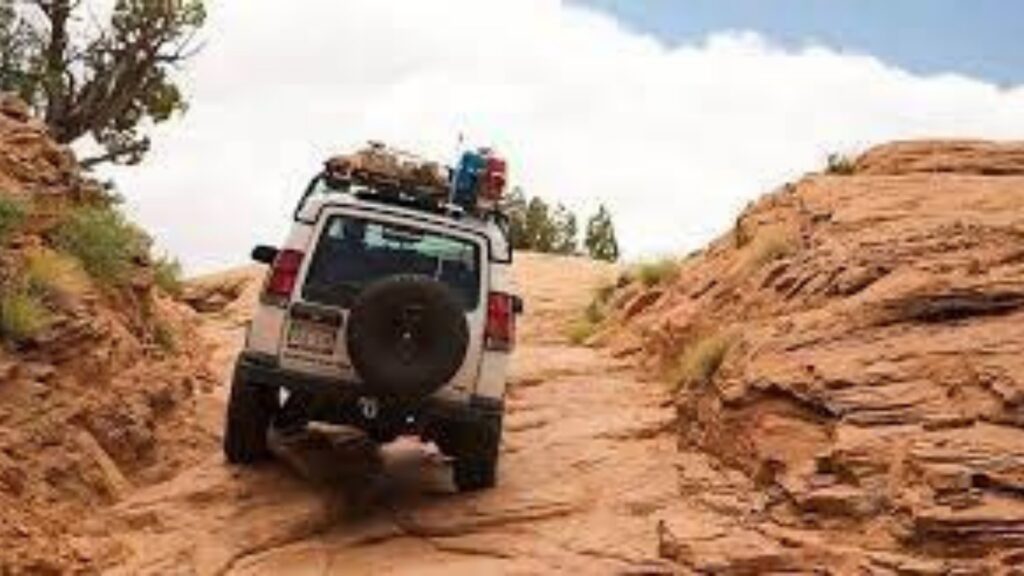Autumn is in full swing, rains are pouring, dirt roads become limp, and it is becoming more and more challenging to driving through them in an ordinary, non-four-wheel drive car. Also, if the vehicle has a low clearance, which is also popularly called “landing”,.
I have to go to the village to visit my relatives periodically. The trouble is that the last five kilometres are on a dirt road without any cover. After heavy rains, the road becomes limp so that only four-wheel-drive trucks. Tracked and wheeled tractors, can drive along with it. It is clear that in the muddy soil, they make deep ruts, which sometimes even the drivers of four-wheel-drive SUVs find it challenging to drive.
What can we say about ordinary, one-wheel driving cars? Getting into these, full of mud, ruts, they get stuck and “sit on their belly”. In such a situation, you have to rely only on the help of the tractor. I suffered like this every year until I came up with two tricks that allow me on an ordinary day as it is much easier for a passenger sedan to cover these treacherous kilometres.
Many drivers have country houses; they like to go to nature, to barbecue, etc. I am sure that they often face the problem of insufficient cross-country ability of their cars and my advice can be helpful to them.
Down with the rut!
Driving in a deep rut can be very dangerous for your vehicle. It does not matter what kind of track it is: dirty in wet black earth or clay, dry, or winter ice. The fact is that under the bottom, there are many essential components and parts: the engine crankcase, suspension elements, electrical wiring, pipes for the fuel and brake systems.
Once in a rut and hitting the ground or ice with the “belly”, you can easily damage essential parts, fraught with breakdown and lengthy, expensive repairs. Surprisingly, even knowing this, most drivers stubbornly crawl in a rut, risking “sitting on their belly” or damaging the car.
One day I came up with the idea that I tested on one of my trips on a muddy, dirt road with deep ruts. What have I done? I just didn’t get into a rut. I drove along with the “platforms” between the tracks. These areas are always drier and more brutal than the tracks themselves, usually accumulating a lot of dirt and water. Also, there is no risk of damaging anything underneath the vehicle.
However, I want to warn you right away. This method requires the driver to have confident ownership of the car, a sense of size, a clear understanding of where the wheels are and some self-control. When driving between ruts, you should not try to go fast – you can make a mistake and slip into the track and/ or a ditch. However, it is worth remembering that the coating is slippery from rain, and summer tyres do not adhere well to wet surfaces.
If you have never travelled in this way, I advise you to find a suitable road in your free time and try to driving along with it between the tracks. The main thing is that it is a dry day and a road. Don’t try to go fast right away. Start at low speeds. This kind of workout will prove to be very useful when you get into real mud.
In the summer or winter?
Once again, going to the village, I looked at the weather forecast with a shudder and thought it would be difficult for me again. As I wrote just above, summer tyres on a soggy primer slide very much, the car is poorly controlled and threatens to slip into a ditch.
I really didn’t want to risk it again, so I decided to act outside the box. Put in the trunk two disks with winter tyres wrapped in polyethene. I decided to change the tyres on the drive axle to winter tyres before driving on the muddy primer. Hoping that the tyres’ developed lugs will help me stay on the road more confidently and drive through muddy holes without getting stuck in them.
Why didn’t I immediately change the car into winter tyres? Because in the beginning, I had to drive 350 km. On excellent asphalt roads, and only the last five kilometres were problematic. So there was no point in driving winter tyres on dry asphalt.
The effect of using winter tyres on muddy ground surpassed all my expectations. I drove the last leg of the trip in heavy rain without any problems. Also do skidding and side sliding, fully and confidently controlling the car’s behaviour. Since then, I have used this trick whenever I go to places where I might driving on harmful, soggy dirt.
Make sure you have tyres from a list of best truck tyre brands for more reliability.
A few tips for those who decide to follow my example:
- Pack your tyres in waterproof cases. After dirt, you are unlikely to be able to wash them right away.
- Stow the tyres so that you can easily access them without removing other things from the trunk. Place the jack and the balloon wrench next to it.
- If you have a full-size spare wheel in your trunk, remove it. Put one of the winter tyres in its place on the road. This will save space in the trunk, as there will be only one tyre, and the second will be in place of the “spare”.
These valuable tricks, when used correctly, can significantly facilitate the life of an ordinary passenger car driver on a bad road.
